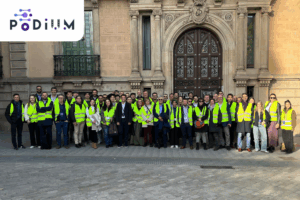RESIST project is completing its scientific journey and invites you all to the presentation of its final outcomes on 24 June 2022 at 10 CET!
RESIST’s goal is to increase the #resilience of seamless transport operation to natural and man-made extreme events, protect the users of the European transport infrastructure, and provide optimal information to the operators and users of the transport infrastructure.
Register here and join us. (registration is free of charge, but required)
RESilient Transport InfraSTructure to Extreme Events (RESIST) is a European Commission Horizon 2020 funded research project. The overall goal of RESIST is to increase the resilience of seamless transport operation to natural and man-made extreme events, protect the users of the European transport infrastructure, and provide optimal information to the operators and users of the transport infrastructure.
To increase resilience, RESIST has developed an integrated, interoperable, and scalable safety/security platform to offer high levels of resilience and secure the nearly seamless transport operation in the event of critical structures subjected to extreme events. This is done by a multi-level approach which includes tools and technologies for designing:
- preventive and predictive strategies for transport network resilience in terms of vulnerability and predictive analysis and risk assessment,
- reactive strategies in terms of emergency secure communication and on-demand rapid and accurate robotic in-depth structural damage inspection of critical transport structures (after the disaster) for offering situation awareness to the control and (re)routing options to the users.
The integrated RESIST system was tested on two pilots. The 1st pilot, the focus of this workshop, was at the T9-T11 bridge in Egnatia Odos, Greece (Peristeri/Epirus). The whole system was tested in a seismic triggered landslide scenario that affects the integrity of the end supports and of the superstructure of the tall balance cantilevered ravine bridge T9-T11. The aerial robots took measurements, both visual and contact, which were transmitted to the vulnerability and risk assessment modules for analysis. Vibration/strain/displacement/tilt was measured by sensors, installed by an aerial robot, and by the Egnatia Odos monitoring network. Load testing was conducted by Egnatia Odos to validate the autonomous structural assessment. At the same time, the ability of the mobility continuity module was tested on live conditions to see the ability to reroute traffic and properly disseminate information to users of the road.







